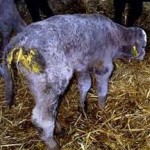Scours in Calves Can Be Very Costly for Cattle Producers
go.ncsu.edu/readext?322221
en Español / em Português
El inglés es el idioma de control de esta página. En la medida en que haya algún conflicto entre la traducción al inglés y la traducción, el inglés prevalece.
Al hacer clic en el enlace de traducción se activa un servicio de traducción gratuito para convertir la página al español. Al igual que con cualquier traducción por Internet, la conversión no es sensible al contexto y puede que no traduzca el texto en su significado original. NC State Extension no garantiza la exactitud del texto traducido. Por favor, tenga en cuenta que algunas aplicaciones y/o servicios pueden no funcionar como se espera cuando se traducen.
Português
Inglês é o idioma de controle desta página. Na medida que haja algum conflito entre o texto original em Inglês e a tradução, o Inglês prevalece.
Ao clicar no link de tradução, um serviço gratuito de tradução será ativado para converter a página para o Português. Como em qualquer tradução pela internet, a conversão não é sensivel ao contexto e pode não ocorrer a tradução para o significado orginal. O serviço de Extensão da Carolina do Norte (NC State Extension) não garante a exatidão do texto traduzido. Por favor, observe que algumas funções ou serviços podem não funcionar como esperado após a tradução.
English
English is the controlling language of this page. To the extent there is any conflict between the English text and the translation, English controls.
Clicking on the translation link activates a free translation service to convert the page to Spanish. As with any Internet translation, the conversion is not context-sensitive and may not translate the text to its original meaning. NC State Extension does not guarantee the accuracy of the translated text. Please note that some applications and/or services may not function as expected when translated.
Collapse ▲ Calf scours, or diarrhea, is a very costly problem for many producers. Calves suffering from scours can become critically ill in a short time. Dehydration, electrolyte depletion and acid-base imbalances are the underlying causes of the animal’s demise. Calf scours is a complex disease; that is, it is caused by a variety of infectious agents and conditions, not just one single agent. In fact, almost any disease agent which attacks a calf during the first three weeks of life will result in some level of scours (diarrhea). The reason is because the gut is still so immature during that period and is the weakest point of the calf’s system. That is a significant point to remember as you consider prevention, treatment or diagnosis. It may be important to pursue a diagnosis through laboratory work of culture, etc.; the cause could be a single agent, such as salmonella. But if a variety of agents are present, the diagnosis is not very significant and you had better concentrate on control and prevention rather than a specific diagnosis. In this latter type of outbreak, the lab can eventually identify almost all of the common causes of scours as being present in the herd.
Calf scours, or diarrhea, is a very costly problem for many producers. Calves suffering from scours can become critically ill in a short time. Dehydration, electrolyte depletion and acid-base imbalances are the underlying causes of the animal’s demise. Calf scours is a complex disease; that is, it is caused by a variety of infectious agents and conditions, not just one single agent. In fact, almost any disease agent which attacks a calf during the first three weeks of life will result in some level of scours (diarrhea). The reason is because the gut is still so immature during that period and is the weakest point of the calf’s system. That is a significant point to remember as you consider prevention, treatment or diagnosis. It may be important to pursue a diagnosis through laboratory work of culture, etc.; the cause could be a single agent, such as salmonella. But if a variety of agents are present, the diagnosis is not very significant and you had better concentrate on control and prevention rather than a specific diagnosis. In this latter type of outbreak, the lab can eventually identify almost all of the common causes of scours as being present in the herd.
The immediate and most important treatment for all scouring newborn calves is the same,regardless of cause. They must receive fluids, electrolytes and energy. The fluid is essential in order to allow the body organs such as the kidneys, liver, etc. to continue to function. However, the fluid cannot be absorbed from the gut unless it contains electrolytes (salts) in the proper proportions. And, that absorption process also requires lots of energy. If you can keep the calf hydrated, its own body defenses will usually be able to control the infectious agents involved. The exception to this occurs when there is an immune deficiency (lack of absorption of antibodies from colostrum). There are a variety of fluid and electrolyte formulas available and most will work to some extent. Consult with your veterinarian about his choice and why. If the products are not working, re-evaluate with them again.
The major problem encountered in treatment with fluids and electrolytes is that producers give too little, too late. Plan to give 2 qts., 2–4 times per day. Determine the frequency of treatment needed by the amount of dehydration present; this is evidenced by sinking of the eyes and elasticity of skin on the neck and withers. Don’t mix the fluid and electrolytes with milk; that prevents curd formation and the milk is then of no benefit. If you are feeding milk, wait for 15–20 minutes before giving the fluid and electrolytes.
Utah State Cooperative Extension




